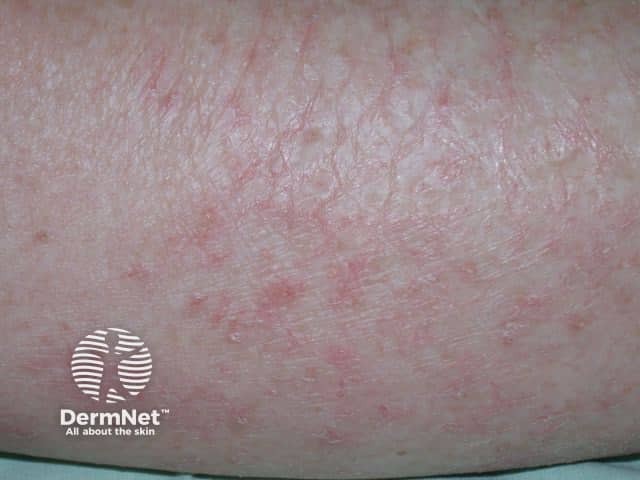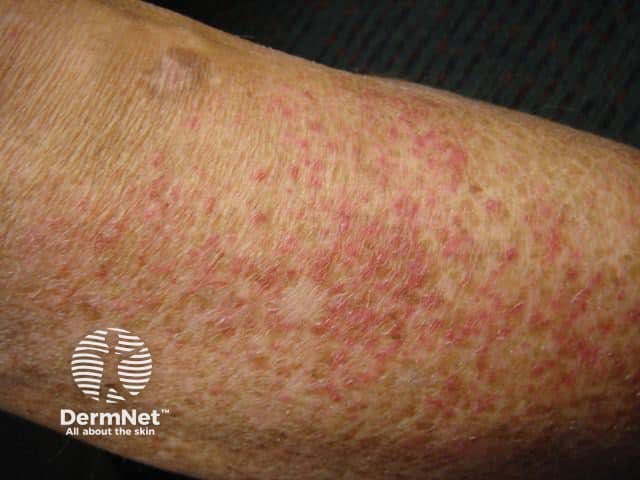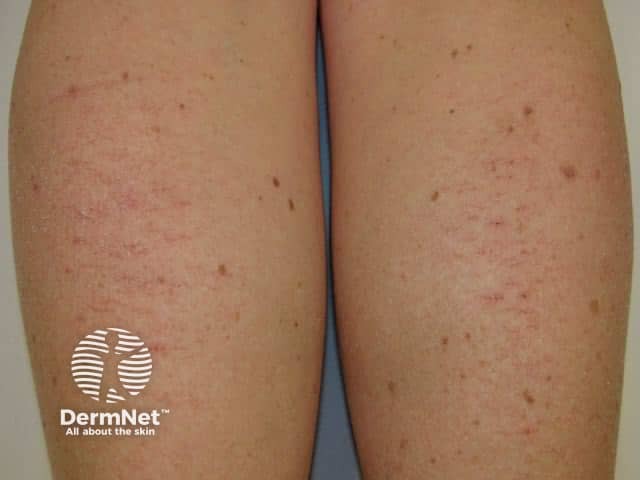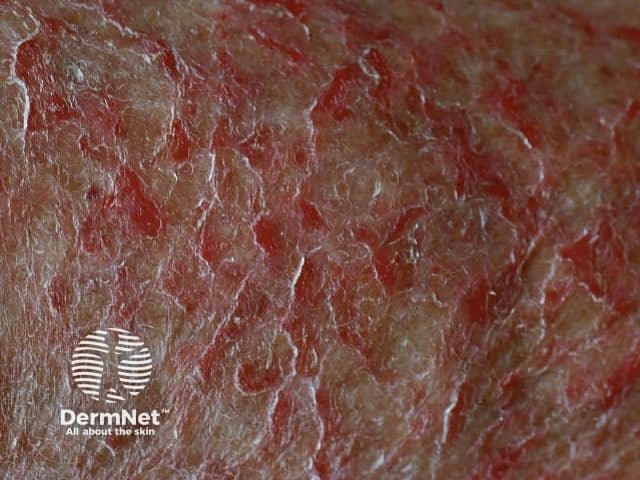Main menu
Common skin conditions

NEWS
Join DermNet PRO
Read more
Quick links
Asteatotic eczema — extra information
Asteatotic eczema
Author: Hon A/Prof Amanda Oakley, Dermatologist, Hamilton, New Zealand. Updated July 2014.
Introduction Causes Demographics Clinical features Diagnosis Treatment
What is asteatotic eczema?
Asteatotic eczema is a common type of dermatitis that occurs as a result of dry skin. It got its French name eczema craquelé from its cracked appearance. It is also known as xerotic (dry) eczema.
The most common site is the shins, but asteatotic eczema may occur elsewhere including upper limbs and trunk.
What causes asteatotic eczema?
Asteatotic eczema is mainly due to water loss from the stratum corneum. This occurs because of a breakdown of the skin barrier due to genetic predisposition and injury by environmental factors. These include:
- Low humidity (winter, desert, high altitude, travel, use of dehumidifier or fan heater)
- Excessive bathing especially using soaps and detergents.
Who gets asteatotic eczema?
Asteatotic eczema can occur in anyone with very dry skin.
- It most often affects older people.
- It is also a complication of inherited and acquired forms of ichthyosis.
- Systemic causes include underactive thyroid (myxoedema), malnutrition (zinc and fatty acid deficiencies), severe weight loss and lymphoma.
- Drugs can cause asteatotic eczema, particularly retinoids (acitretin, isotretinoin), diuretics and protein kinase inhibitors.
What are the clinical features of asteatotic eczema?
Asteatotic eczema often has a distinctive crazy-paving appearance. Diamond-shaped plates of skin are separated from each other by red bands forming a network. There may also be scratch marks. It may start on one shin but soon spreads to affect the skin around both lower legs.
Severe asteatotic eczema can lead to more severe secondary dermatitis with generalised redness, localised swelling and surface blistering. Like other forms of eczema on the lower leg, it can eventually result in widespread secondary disseminated eczema (autosensitisation).

Eczema craquelé

Eczema craquelé

Eczema craquelé

Eczema craquelé

Eczema craquelé

Eczema craquelé
How is asteatotic eczema diagnosed?
Asteatotic eczema is diagnosed by its appearance and tests are unnecessary in the majority of patients.
Thyroid function tests are appropriate if there are other signs to suggest hypothyroidism, such as dry, thinning hair, weight gain, lethargy and slowness. If asteatotic eczema is of recent onset and accompanied by excessive scaling (acquired ichthyosis), weight loss, fevers or general malaise, the patient should be thoroughly investigated for an internal cause.
What is the treatment for asteatotic eczema?
Asteatotic eczema usually rapidly responds to treatment.
- Consider factors that have caused dry skin: bathe less frequently, use a cream cleanser instead of soap, do not expose skin to direct heat.
- Apply thick emollients and moisturisers such as petroleum jelly/petrolatum or oily cream several times daily — after a few days, thinner ones such as non-ionic cream should be adequate.
- Apply mild topical steroid cream or ointment to reddened skin for a few days; hydrocortisone cream or ointment is often sufficient.
- A more potent topical steroid may be necessary if the eczema is severe.
Ensure the skin is not allowed to dry out again, as asteatotic eczema is very likely to recur.
On DermNet
Other websites
- Asteatotic Eczema — Medscape Reference
- Xerosis — Medline Plus
